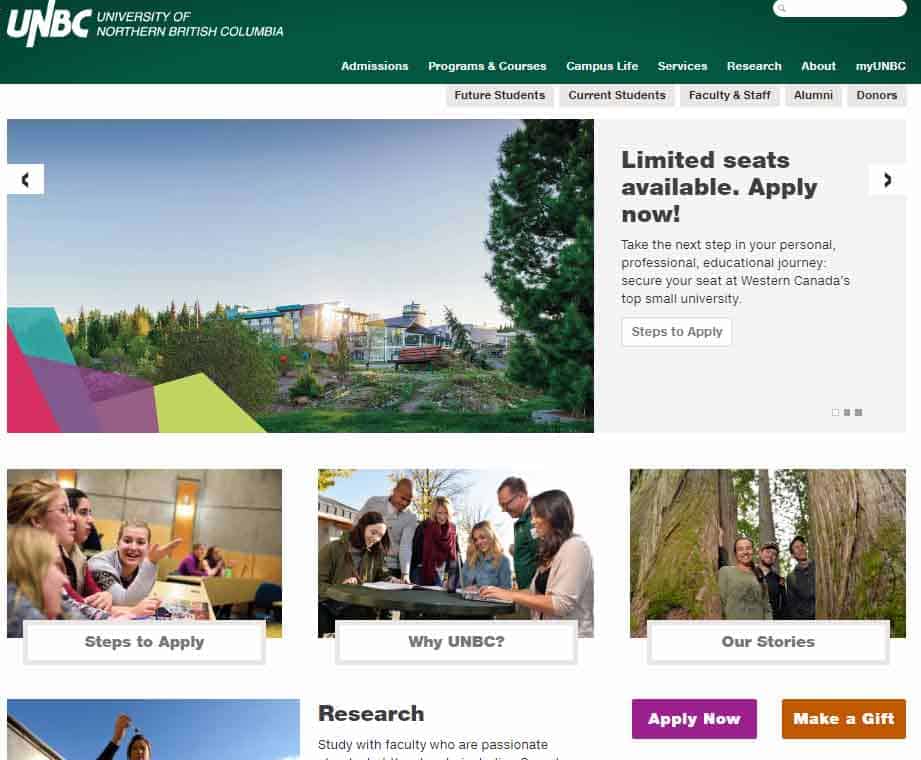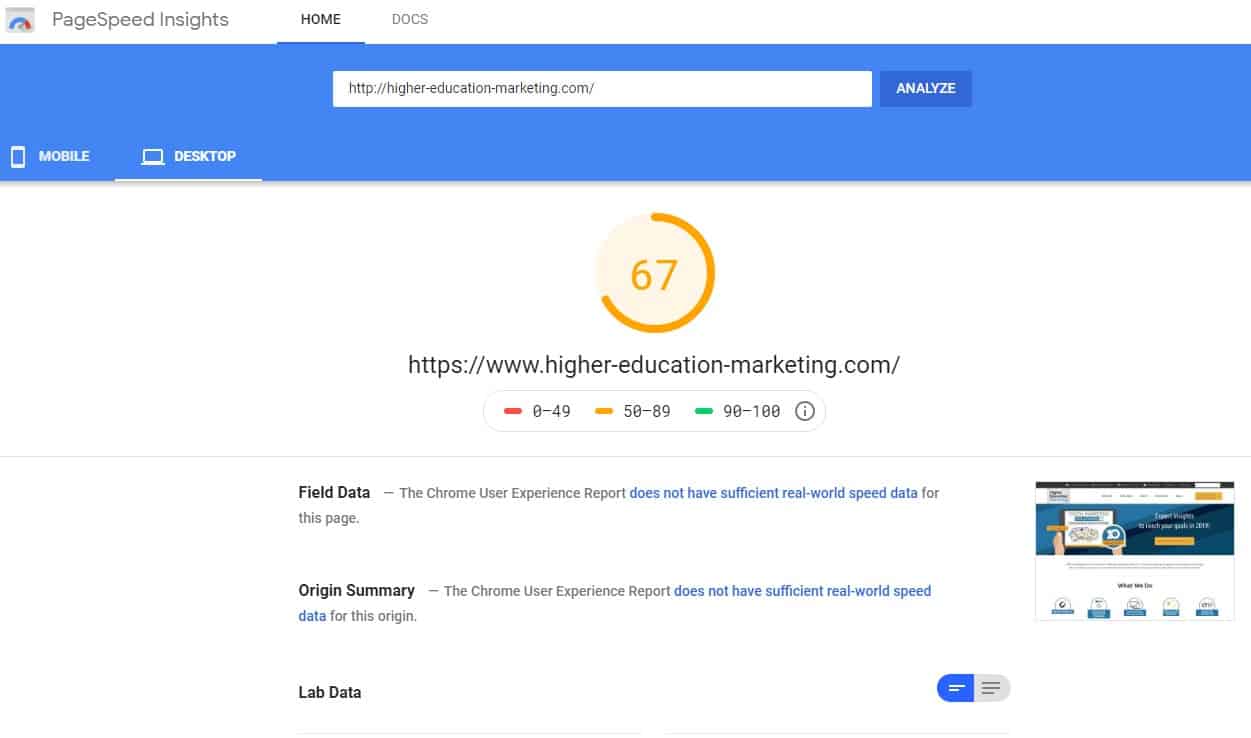
The more time and effort your school invests in digital marketing, the more robust your strategies will become. Within a short space of time, your institution could find itself quickly progressing from creating a few blogs and social media posts a month, to an expansive strategy involving numerous web pages, assets, data sources, and other components.
As you get to this point, though, you may also find that things suddenly start to go wrong. Your web traffic might dip unexpectedly. You’ll realize that an old email campaign has become dated. Social media strategies that worked for you before will stop having the same impact. These kinds of problems can arise even if you are regularly and diligently monitoring your results.
This is where a digital marketing audit can be incredibly helpful. A thorough and detailed review of every facet of your online presence, a well-executed audit will help you to uncover problems, challenges, and opportunities for improvement that you won’t normally find as you go through your day-to-day processes.
If you not sure whether this exercise would be worthwhile for you, read on to learn about some common discoveries that a digital marketing audit could help your school to make.

Streamlining Your School’s Website UX
In many cases, the best place to begin a digital marketing audit is the same place that many of your prospects begin: the homepage of your website. Your first and best chance to create a good impression, your homepage needs to communicate your school’s unique value proposition effectively.
As you land on your site, put yourself in the shoes of your prospects, and try to imagine their thought process. What information are they looking for? Can they see it easily as soon they arrive on the page? And what kind of impression does the look, layout, and feel of your website leave them with?
Example: The University of Northern British Columbia’s homepage is very well-positioned for prospective students, offering them the information they need as soon as they arrive on the site.

This simple exercise is a good starting point for a website UX design assessment. Going deeper than a simple review of the visual appeal or technical functionality of your site, a UX design evaluation will assess it from the perspective of the overall experience it creates for your audience. As you move to different pages, evaluating your site’s UX will help you gauge how user-friendly it is, whether it contains all the information prospects need, and how logically its navigation moves users through their journey to find out everything they need to know before making an inquiry or application.
In doing so, you examine every facet of your website, from its design elements, to its content, to its underlying technical framework, and identify both major and minor improvements that can be made.
The results you uncover likely won’t result in you having to do a complete redesign of your site. In most cases, you should be able to identify a number of small, actionable changes that can have a big impact. For example, you might find that adding some extra visuals makes your homepage much more appealing, or that placing a form on one of your program pages increases the amount of inquiries you receive about that course.
You should also take time to look at the overall functionality of your site across different devices. You can use the Google Page Speeds Insights tool to gauge how fast your loading times are, and make necessary changes where needed.
Example: The Google Page Speed Insights results page.

Similarly, the Google Mobile-Friendly Test will help you determine how responsive your site is. However, you should also take time to manually review it across different devices, as even a site that Google deems ‘mobile-friendly’ can still have certain elements missing or misaligned. By evaluating your website is this comprehensive fashion, you can ensure that it is good as it can possibly be, in terms of both style and substance.
Checking the Health of Your Channel Mix in an Education Digital Marketing Audit
While some institutions will identify specific areas they wish to focus on, a full digital marketing audit for schools will often involve a comprehensive review of your content marketing, all of your social media accounts, paid advertising campaigns, and other digital channels. Taking this all-encompassing approach allows you to view your entire online presence as a whole, and gain a clearer picture of your school’s strengths and weaknesses.
As a starting point, you should look at the general health and diversity of your overall digital marketing mix. View your results across each channel, and examine how well each is working to attract, engage, and convert your audience.
Example: Analyzing your Channel Report in Google Analytics year over year can give you insight into the overall health of your efforts.

This will help you to identify which channels are offering you the best return, and offer opportunities for growth. For instance, you might find that your website content creation plays a big role in attracting prospects, and choose to invest more time and effort into it.
Conversely, it might also lead to you identifying channels that aren’t yielding results. It may become more apparent that your social media marketing efforts aren’t resulting in a lot of quality leads, or that many of your paid advertising efforts were less effective than you had hoped.
Of course, just because a channel is underperforming doesn’t mean you should stop investing it. Indeed, an audit is the perfect time to dig a little deeper and gain a better understanding of both your successful and unsuccessful digital marketing initiatives. You should take some time to look at each channel in-depth and examine what is working and what isn’t, and why. Are you taking the right approach to each channel? What sort of resources – financial or otherwise – are you devoting to your initiatives? What kind of return should you be expecting from each, based on your knowledge and experience of your audience? Doing this will help give you a much-needed sense of perspective about your performance, and identify realistic and actionable targets and strategies for the future.
How an SEO Audit Could Help Your School
Whether it is a standalone evaluation or forms part of your channel analysis, auditing your school’s SEO practices can be absolutely vital, particularly as search engine algorithms and best practices continue to evolve.
On a basic level, your school should conduct a general review of its optimization of key SEO elements across all of its pages, such as:
- Page titles
- URLs
- Anchor text
- Meta descriptions
- Use of alt text in images
- General keyword integration
This process will help you uncover pages that have not been optimized properly, or those that comply with outdated SEO practices, and update them accordingly. These changes should be fairly simple to execute, and could result in a significant rankings boost.
The audit should also encompass a wider review of your overall website architecture, in which you evaluate your existing XML sitemaps and review how well your content is arranged for search engine indexing. Common issues you might uncover in this process would include unindexed pages, broken links, or other technical issues which can hurt your domain authority.
Keep in mind that some factors which affect your SEO may be things which you would class as falling into other categories of your audit. For example, page load speeds and mobile friendliness might primarily be considered web design and UX issues, but they are both hugely influential ranking factors for Google. In addition, content creation has a huge effect on SEO, meaning that any audit of your SEO strategy will need to take your content marketing efforts into account, and vice versa.
The Importance of Conversion Tracking in Digital Marketing Audits for Education Institutions
Want to know how many people are clicking on your Facebook Ad? The amount of times a course brochure is being downloaded? What percentage of prospects are completing your application form? Whatever your goal is, properly measuring conversions is absolutely vital if you want a truly accurate picture of how successful your digital marketing efforts are.
Unfortunately, this can be easier said than done. Proper conversion tracking requires you to implement tracking codes across your web pages and assets, often in relation to a number of different data sources. For example, Google Tag Manager code needs to be implemented across your web pages to accurately track your efforts in Google Analytics, and GA goals should be set to track success in key conversions. Additionally, the Facebook Pixel code needs to be added for any pages prospects land on from Facebook Ads.
Example: The Facebook Pixel allows Facebooks Ads to track conversions from your campaigns.

If you are using a marketing automation system like HubSpot or Mautic to create assets like forms, landing pages, and CTAs, the native tracking code from this platform will also come into play.
Such a complex ecosystem can create a lot of room for errors. A coding error could cause your tracking to report inaccurately. You might create a new landing page or program page and neglect to add a tracking code. The completion of an inquiry form might not be set up as a GA goal.
There are many, many more possible problems that could arise. Here are just a few examples of some we’ve come across in some of our previous digital marketing audits for education institutions:
- Google Tag Manager not being used on websites
- Event goals set up in GA for actions that should be destination goals
- Cookie errors which caused traffic to report from incorrect sources
- Multiple conversions being reported for a single form submission
- Cross domain tracking not set up properly for schools with multiple domains
The audit process will allow you to examine every aspect of your tracking setup, spot technical problems, and compare different data sources to uncover anomalies and ensure your measurement is harmonized across all channels.
Use Your Audit as an Opportunity for Competitor Benchmarking
As you audit your own activities, it might also be good opportunity to take an in-depth look at your competitors. Competitor benchmarking can give you a realistic idea of how your school is performing relative to the market you are in, and how much more you can realistically hope to achieve.
This can be particularly in important in the education sector. Attracting students isn’t like making sales in other industries, and the metrics and KPIs that digital marketing experts suggest are indicative of good performance might not necessarily apply to you. A school is unlikely to have the reach and social media following of a well-known global brand, or an application rate that mirrors the sales rate of a retail website.
Even within education, your expectations might be skewed by schools whose target market and circumstances differ greatly from yours. For example, a large university might be more likely to rank highly for a specific education keyword than a small career college.
Looking at the results of your direct competitors, however, can be much more instructive. Carry out a competitive ranking analysis based on keywords you are targeting, or look at your comparative social media followers and engagement across sites like Facebook, Instagram, and LinkedIn, and see how your performance measures up.
Example: Facebook Insights allows you to watch your competitors’ pages and compare their performance with yours. This kind of information could be very useful during your audit process.

On a more qualitative level, you should look at your competitors’ online presence and see if you can identify any particular aspects of their digital marketing efforts that outdo your own. Perhaps they publish blogs more frequently? Or have a more modern website design? Or are more adept at creating content for a particular social network? Identifying where have you fall short can be the first step towards levelling the playing field.
At the other end of the scale, you may also identify specific advantages you have over your competitors, such as a larger social media following, or higher keyword rankings. By being aware of where you have an edge, you are better placed to capitalize on it, and use it to reach prospects that your competitors won’t be able to.
Auditing Your Admissions Follow-up Activities
To truly get the most out of your audit, it may wise to use include an examination of your admissions team’s follow-up activities in the process.
You should look at how well-defined your admissions funnel is. What follow-up activities, if any, does your team carry out to nurture prospects towards enrollment? Are there clear workflows in place outlining them? Is your follow-up being scheduled so that prospects are contacted at optimal times?
If you find your team falls short in any of these areas, you can take steps to implement a more defined process. Making use of CRM and marketing automation can be ideal for this purpose.
You should also analyze any follow-up activities you already have in place. For instance, many schools will develop automated email workflows, which can be a great timesaver, and also be very effective in pushing prospects down the funnel.
However, they can also cause their fair share of issues if not managed properly. Errors can arise in the architecture of complex email workflows, such as if/then branches that are redundant, or cause the wrong mails to be sent to certain sets of prospects. Workflows with overlapping purposes or audiences might cause the same offers – or even the same mails – to be sent to recipients more than once. Older mails that contain out of date information may remain active in certain workflows. Reviewing the structure of your workflows will allow you to spot and fix these kinds of issues before they start to hurt your conversion rates.
Example: A particularly complex follow-up workflow for a school. Processes like this need to be reviewed to ensure all of their components are in sound working order.

In addition, it can be very worthwhile to examine the content of your emails, as well any other communications you might send, such as SMS or instant messages. You might find that their subject lines or body text can be tweaked to better connect with students. Or that you can link to different, more relevant offers to improve your click-through rates. Or even that you can make changes to their design or layout to make them more appealing.
All of these elements should be reviewed alongside any data you have about the results of your follow-up, such as email marketing KPIs, contact reports, and lead-to-application ratios. If you find correlation between the things you think need to be improved and your performance data, you’ll know you are on the right track.
Analyzing and Updating Your Student Personas
Because of the depth of information you are dealing with, it’s entirely possible that a digital marketing audit could lead you to completely re-evaluate what you thought you knew about your audience.
For example, analyzing your traffic and conversions by location might result in you discovering that interest in your programs and courses is much higher than you thought in a particular city, region, or even country. This could lead to you stepping up your efforts in this location.
You may also discover that other assumptions you have made about the characteristics and demographics of your audience are wrong, such as their average age, gender, or native language. Analyzing your competitors’ activities and who they appear to be targeting online may also give you a different perspective on your audience.
This may not be too surprising. After all, many schools operate in wildly changeable markets in which the makeup of their typical prospective students can be affected by a whole host of trends, factors, and events.
For instance, a language school that has historically attracted a lot of applicants from a particular country might see a steep decline in that market as a result of an economic downturn. And even when admissions staff and education agents are well aware of these developments, schools can often be slow to update their online recruitment tactics and approaches accordingly.
Where your audit does uncover new information in this regard, you should make sure it is reflected in your student persona. Your personas should be living documents, that can be refined and updated over time based on your changing situation and objectives. By continuously tweaking them, and even creating new ones, you can keep your overall strategy and goals in sharp focus.
Putting Your Audit findings into Action
A higher education digital marketing audit will often leave you with dozens of recommendations for improvement across different areas. As worthwhile as this may seem, it can be a bit daunting, too, as your team attempts to get to grips with a slew of problems and challenges it wasn’t previously prepared to face.
In general, it’s best to take these improvements one step at a time, taking care of the highest priority improvements first, and then gradually moving through your list as quickly as your resources allow. Over time, you should be able to bring your online presence to where it needs to be.






